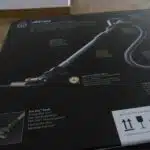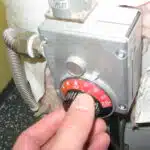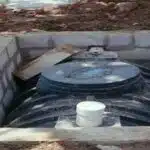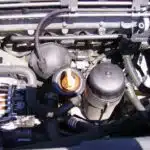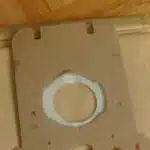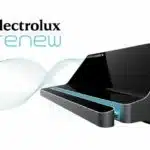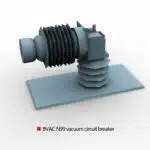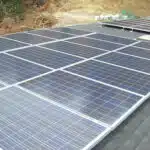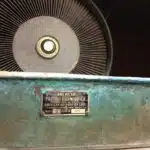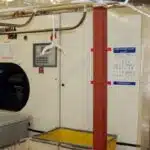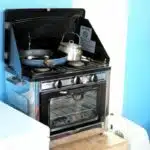As a shop vac expert, I have come across many individuals who struggle with the proper use of their shop vac for water. Many people believe that a regular vacuum cleaner can be used for water spills, but this is not only ineffective but also dangerous. Shop vacuums are designed specifically for heavy-duty cleaning and are equipped with features that make them safe to use around water.
In this article, we will discuss how to use a shop vac for water spills effectively. We will cover the necessary precautions you need to take before turning on your vacuum cleaner and the steps involved in sucking up water using your shop vac. Additionally, we will highlight some essential maintenance practices that will help keep your machine in good condition and ensure its longevity. Whether you’re dealing with a small spill at home or a more significant flooding incident, this guide will provide you with all the information you need to clean up efficiently and safely using your shop vac.
Understanding The Risks Of Using A Regular Vacuum For Water
When it comes to cleaning up water spills, using a regular vacuum may seem like a quick and easy solution, but it can be very dangerous. A regular vacuum is not designed to handle liquids and can cause serious damage or even electrocution. It’s important to understand the risks of using a regular vacuum for water and take appropriate measures to ensure your safety.
Using towels instead of a vacuum is a safer solution for cleaning up water spills. Towels are absorbent and can easily soak up the excess water without causing any harm. If you have a large spill, consider using multiple towels to ensure that all the water is absorbed. Additionally, make sure to wring out the towels in between uses so they remain effective.
The potential hazards of using a regular vacuum for water include electrical shock, damage to the motor or filter, and mold growth inside the machine. Water can short-circuit electrical components, leading to electrocution or fire. Furthermore, moisture can cause rust and corrosion on metal parts, leading to permanent damage. Finally, if any moisture remains inside the machine after use, it can create an ideal environment for mold growth which can be harmful to your health. In summary, avoid using a regular vacuum for water and instead rely on safer alternatives such as towels or specialized shop vacuums designed for wet cleaning applications.
Moving on from understanding the risks of using a regular vacuum for water spills, let’s explore shop vacuums: the heavy-duty cleaning solution that is specifically designed for wet/dry cleaning tasks.
Shop Vacuums: The Heavy-Duty Cleaning Solution
As we have learned in the previous section, using a regular vacuum for water is not only ineffective but also poses safety risks. The good news is that shop vacuums are designed to handle wet and dry messes, making them the heavy-duty cleaning solution for any household or commercial space. However, before using a shop vac for water, it’s important to understand their proper storage and maintenance.
Proper storage of your shop vac is crucial for its longevity and efficiency. When not in use, store your shop vac in a dry and cool place to prevent rusting or damage to its inner components. Keep all attachments organized and stored with the vacuum to avoid losing them or misplacing them. It’s also important to keep the power cord neatly wrapped around the vacuum to prevent tripping hazards.
Regular maintenance of your shop vac will ensure its optimal performance when cleaning up wet messes. After every use, make sure to empty the canister thoroughly and clean any filters or attachments used during cleaning. Check the hoses for clogs or tears as these can impede suction power when cleaning up liquids. By practicing proper storage and maintenance techniques, you can extend the life of your shop vac and ensure its effectiveness when dealing with wet messes.
It’s clear that using a shop vac for water has many benefits over regular vacuums. However, before you begin using your shop vac for liquid spills, there are some safety precautions you should consider. In the next section, we’ll discuss these precautions in detail so that you can safely and confidently use your shop vac for all your wet cleaning needs.
Safety Precautions Before Using Your Shop Vac For Water
Before using your shop vac for water cleanup, it is essential to take safety precautions. Water can cause electrical hazards that can lead to severe injuries or even death. As a shop vac expert, I recommend that you prioritize the importance of ventilation in the room where you will be cleaning up the water. Ensure that there is proper airflow and that the room’s temperature is not too high or low.
Another safety measure to consider before using your shop vac for water cleanup is protective gear. You should wear appropriate clothing and equipment like rubber gloves, boots, and goggles. These items protect you from harmful bacteria and chemicals present in contaminated water. Additionally, ensure you have an extension cord with a ground fault circuit interrupter (GFCI) plug to prevent electric shocks.
In summary, safety should always come first when using a shop vac for water cleanup. The importance of ventilation cannot be overstated as it helps keep the environment safe from electrical hazards. Also, wearing protective gear is necessary to safeguard yourself from harmful substances in the contaminated water. With these safety measures in place, you can confidently clean up any standing water in your home or office space without fear of accidents occurring. In the next section, we will discuss how to choose the right shop vac for effective water cleanup.
Choosing The Right Shop Vac For Water Cleanup
When it comes to cleaning up water spills or floods, using a shop vac is an effective and efficient solution. However, not all shop vacs are created equal. It is important to choose the right one for water cleanup to ensure that it can handle the job properly.
Firstly, consider the size of the shop vac. For water cleanup, you will need a larger capacity tank to hold more water without needing to stop and empty it frequently. A 12-gallon shop vac should be sufficient for most home or small business use, while larger commercial settings may require a 14-gallon or even a 16-gallon size.
Secondly, pay attention to the filtration system of the shop vac. Ensure that it has a filter specifically designed for wet/dry pickup as well as a foam sleeve to protect the motor from getting wet. This will prevent any potential damage to your machine and ensure safe operation.
Lastly, consider any additional features that could make your job easier such as a drain valve for easy disposal of collected water or attachments designed specifically for water extraction such as squeegees and wands.
By choosing the right size and filtration system for your shop vac and considering additional features, you can ensure that your clean-up task goes smoothly with minimal effort on your part. Before starting any cleanup work with your shop vac, familiarize yourself with its features and how they work together to make quick work of any messes you may encounter.
Familiarizing Yourself With Your Shop Vac’s Features
Understanding the features of your shop vac is crucial to properly using it for water cleanup. Most shop vacuums come with a variety of attachments and settings to make cleaning up liquids easier. For example, many models have a water pump feature that allows you to pump out the collected liquid without having to dump it manually. Additionally, some models have a built-in float switch that will automatically turn off the vacuum when the water level reaches a certain point.
When using your shop vac for water cleanup, it’s essential to follow proper safety protocols. Never plug in or operate a wet/dry vacuum with wet hands or while standing on wet surfaces. Also, ensure that all electrical outlets and cords are dry before plugging in your machine. It’s also necessary to use caution when emptying the collected water as it may contain harmful bacteria or other hazardous materials.
Proper maintenance of your shop vac is vital for its longevity and effectiveness. After each use, be sure to empty out any remaining water and let the machine dry completely before storing it away. Additionally, inspect all filters and hoses regularly and replace them as needed. Taking care of your shop vac will not only help prolong its lifespan but also ensure that it performs optimally during water cleanup tasks.
Transition: Now that you’re familiar with the various features of your shop vac and understand how to use it safely, the next step is preparing it for water cleanup.
Preparing Your Shop Vac For Water Cleanup
When it comes to cleaning up water damage, a shop vac can be an incredibly useful tool. However, before you start using your shop vac for water cleanup, it’s important to take some safety precautions. First and foremost, make sure the outlet you’re plugging your shop vac into is a ground fault circuit interrupter (GFCI) outlet. This will help prevent electric shock in case of any accidents.
Another important safety consideration is to ensure that you’re not vacuuming up any hazardous materials along with the water. If there’s any chance that the water contains chemicals or other dangerous substances, it’s best to call in a professional cleaning service instead of trying to handle it on your own.
Finally, it’s crucial to take steps to prevent further water damage as you work. Make sure you turn off any power sources near the affected area and remove any electrical devices or appliances from the room if possible. If there are any valuables or important documents in the area, move them to a dry location as soon as possible.
By taking these safety precautions, you can use your shop vac for water cleanup without putting yourself at risk or causing further damage. In the next section, we’ll discuss how to set up your shop vac for water suction so you can get started with the cleanup process.
Setting Up Your Shop Vac For Water Suction
After preparing your shop vac for water cleanup, the next step is to set it up for water suction. Before proceeding, make sure that you are familiar with shop vac safety measures to prevent accidents and injuries. Remember that water can conduct electricity, so never use your shop vac near electrical outlets or appliances.
To start setting up your shop vac for water suction, remove the filter bag and replace it with a foam filter designed for wet/dry applications. This type of filter will prevent debris from clogging the machine while allowing it to suck up water effectively. Additionally, adjust the hose attachment to ensure that it fits snugly and securely onto the intake port.
Once everything is in place, it’s time to start sucking up water with your shop vac. To help you out, here are some essential water suction tips: 1) Move the hose slowly over the surface of the water in a back-and-forth motion to avoid splashing or creating waves; 2) Suck up as much of the standing water as possible before attempting to dry out any remaining moisture; 3) Empty your shop vac frequently to prevent it from becoming too heavy or overflowing.
Now that you know how to set up your shop vac for water suction and have some useful tips at hand, you’re ready to tackle any wet messes that come your way! Whether you’re dealing with a flooded basement or a spilled drink on your carpet, using a shop vac is an efficient and effective way to clean up excess moisture quickly. So don’t hesitate – get started today!
Sucking Up Water With Your Shop Vac: Step-By-Step Guide
To use your shop vac for water, you need to be aware of its limitations. Shop vacs are not designed to handle large amounts of water, so it’s important to prevent damage by not allowing the tank to reach full capacity. This means frequently emptying the tank and ensuring that the filters are clean.
To maximize suction power and drying time, it’s essential to use the correct attachments. The crevice tool is particularly useful for getting into tight spaces, while the brush attachment can help loosen stubborn dirt or debris. When sucking up water, it’s also important to move the nozzle slowly and steadily over the surface to ensure that all the water is collected.
Preventing damage and maximizing suction power will ultimately help reduce drying time. However, it’s important to note that even with these precautions in place, a shop vac may not be able to completely dry out an area after a flood or leak. In such cases, it may be necessary to call in professional restoration services.
Transition: Now that you have successfully sucked up all the water with your shop vac, it’s time to address another crucial step: emptying your shop vac’s tank.
Emptying Your Shop Vac’s Tank
Once you’ve finished using your shop vac to clean up water, it’s important to properly empty the tank to prevent spills. First, make sure the unit is unplugged and turned off before attempting to empty it. Then, remove the lid or filter from the tank to access the contents inside.
Next, carefully pour the contents of the tank into a proper disposal container. If there is a large amount of water in the tank, consider using a bucket or other container with a pour spout to make this process easier. Make sure not to overfill your disposal container and always follow proper waste management guidelines for disposing of liquids.
Properly disposing of the contents of your shop vac’s tank is an essential part of cleaning up after water damage. By following these steps, you can ensure that spills are prevented and that waste is disposed of in a safe and responsible manner. In the next section, we will discuss how to clean and maintain your shop vac after completing a water cleanup project.
Cleaning And Maintaining Your Shop Vac After Water Cleanup
Cleaning tips: After using your shop vac for water cleanup, it is essential to clean and maintain it properly. Empty the tank by removing the lid and dumping the water out. Rinse the tank with clean water, and wipe it dry with a cloth. Use a cleaning solution to sanitize the inside of the tank, especially if you have been cleaning up dirty or contaminated water. Make sure to clean all the attachments and hoses as well.
Drying techniques: It is crucial to dry your shop vac thoroughly after cleaning it from water. If you do not dry it correctly, mold and bacteria can grow inside the machine, causing foul odors and health hazards. Air-dry all the attachments, hoses, and filters before storing them away. Leave the tank open so that air can circulate inside and dry out any remaining moisture. You can also use a fan or a hairdryer on low heat to speed up the drying process.
Avoiding common shop vac mistakes: To prevent damage to your shop vac, avoid these common mistakes: Do not allow water to sit in the tank for an extended period as this will cause rusting. Do not use your shop vac without a filter as this will cause dust particles to be blown back into the air. Never store your shop vac with any moisture still present as this will cause mold growth inside. By following these simple tips, you can keep your shop vac in optimal condition for future use.
Transition Sentence: Now that you know how to clean and maintain your shop vac after using it for water cleanup let’s discuss avoiding common mistakes that can damage your machine over time.
Avoiding Common Shop Vac Mistakes
Understanding shop vac limitations is crucial when using it for water cleanup. While a shop vac can be effective in removing standing water, it may not be suitable for larger volumes of water. It is important to note that a shop vac should not be used to pump out flooded basements or other large areas as it can cause damage to the vacuum and even create electrical hazards.
Tips for drying out wet surfaces after using a shop vac include opening windows and doors to circulate air, using fans or dehumidifiers, and placing towels on wet surfaces to absorb remaining moisture. It is also recommended to remove any furniture or items on the affected area to prevent mold growth. If there are any signs of mold growth, it is best to consult a professional for proper remediation.
In conclusion, understanding the limitations of a shop vac and taking appropriate measures when drying out wet surfaces can help prevent further damage to your home. However, in cases where large amounts of water need to be removed or if there are signs of mold growth, it is best to seek professional help. In the next section, we will discuss accessories that can aid in water cleanup with your shop vac.
Shop Vac Accessories For Water Cleanup
Filters are an essential accessory for shop vacs when dealing with water cleanup, as they can help prevent the motor from becoming damaged by debris or liquids. Tanks come in a variety of sizes and can be used to collect and store water when using a shop vac. Hoses should be flexible and have the right diameter to ensure efficient suction when using a shop vac for water cleanup. Nozzles can help target specific areas and increase suction when using a shop vac for water. Wheels are important for maneuverability when using a shop vac for water cleanup. Finally, blowers, brushes, wet-dry attachments, float valves, crevice tools, extension wands, extension cords, carpet attachments, squeegees, and foam sleeves are also essential accessories when using a shop vac for water cleanup.
Filters
When it comes to using a shop vac for water cleanup, the most important accessory is the filter. Without proper filter maintenance, your shop vac’s performance will suffer and you may even cause damage to the vacuum itself. To ensure your shop vac works effectively and efficiently for water cleanup, choosing the right filter is crucial.
When selecting a filter for your shop vac, it’s important to consider the type of debris you’ll be cleaning up. If you’re cleaning up water alone, a foam sleeve or cartridge filter can do the trick. However, if you’re picking up larger debris such as leaves or dirt mixed with water, a high-efficiency particulate air (HEPA) filter is necessary. Other filters that can be used include wet/dry filters which are designed to handle both liquids and solids simultaneously.
Filter maintenance is also key in keeping your shop vac running smoothly when cleaning up water spills or floods. Be sure to clean or replace the filter on a regular basis to prevent clogging and maintain suction power. Additionally, always check the manufacturer’s instructions for specific recommendations on how often to clean or replace filters based on usage and type of debris picked up.
In conclusion, selecting the right filter and performing regular maintenance is crucial in ensuring your shop vac is effective in water cleanup situations. By taking these simple steps, you can improve your vacuum’s performance and make quick work of any unwanted water in your home or workspace.
Tanks
When it comes to using a shop vac for water cleanup, another important accessory to consider is the tank. The size of the tank should be chosen based on the amount of water that needs to be cleaned up. For smaller spills or floods, a smaller tank may suffice, while larger floods or standing water will require a larger tank. It’s important to note that tanks can also be used for wet/dry cleanup and can hold both liquids and solids simultaneously.
Tank maintenance is crucial in ensuring your shop vac remains effective in water cleanup situations. After each use, it’s important to clean out the tank thoroughly to prevent mold and bacteria growth. A mixture of warm water and mild detergent can be used to clean the tank effectively. Additionally, tanks should be inspected regularly for cracks or damage, as this can affect their ability to hold liquids.
In conclusion, selecting the right tank size and performing regular maintenance is crucial in ensuring your shop vac is efficient in water cleanup situations. By taking these simple steps, you can improve your vacuum’s performance and reduce the risk of mold or bacteria growth in your home or workspace. Remember to always follow manufacturer recommendations for proper cleaning and maintenance of your shop vac’s tanks.
Hoses
When it comes to using a shop vac for water cleanup, hoses are an essential accessory that should not be overlooked. The size of the shop vac hose is important because it determines the rate at which water can be extracted from the affected area. A larger hose will allow for faster extraction, while a smaller hose may take longer to remove water. It’s important to choose the right size hose based on the amount of water that needs to be removed.
Properly attaching hoses is also crucial in ensuring your shop vac is effective in removing water. Hoses should fit snugly onto the vacuum’s inlet port and be secured tightly with clamps or locking mechanisms. This prevents air leaks that can reduce suction power and make clean up less efficient. It’s important to follow manufacturer recommendations when attaching hoses properly.
Different types of hoses are available for specific water cleanup needs, such as sludge or debris removal. These specialized hoses may have different materials or shapes that make them more effective in certain situations. For example, some hoses have built-in filters that prevent debris from clogging the vacuum motor, while others have wider diameters that allow for larger objects to be picked up. Choosing the right type of hose can improve your shop vac’s performance and make water cleanup easier and more efficient.
Shop Vac Vs. Professional Water Damage Restoration Services
After learning about the accessories needed to use a shop vac for water cleanup, it is important to weigh the pros and cons of using a shop vac versus hiring professional water damage restoration services. One major advantage of using a shop vac is the cost savings. Shop vacs are relatively inexpensive compared to professional services that can charge hundreds or thousands of dollars. Additionally, owning a shop vac allows for quick access to cleanup when needed.
However, there are also drawbacks to using a shop vac for water cleanup. First and foremost, shop vacs have limited capacity and can only hold so much water before needing to be emptied. This means that larger jobs may require multiple emptying sessions which can be time-consuming and frustrating. Additionally, shop vacs are not equipped with the same high-powered equipment as professionals and may not be able to fully remove all moisture from carpets or other surfaces.
When considering cost comparison between using a shop vac and hiring professional help, it is important to take into account the extent of the damage. If only a small area has been affected, then using a shop vac may be an adequate solution at a lower cost. However, if the damage is extensive or involves important items such as electronics or furniture, calling for professional help may be necessary.
In situations where safety is a concern (e.g., electrical hazards), it is best to call for professional help immediately. Additionally, if there has been significant damage or mold growth has already occurred, it is important to hire professionals who have experience in dealing with these issues. While there are advantages to using a shop vac for water cleanup, sometimes calling in the experts is necessary for complete restoration and peace of mind.
When To Call For Professional Help
In the case of a sewer backup, it is important to call a professional as soon as possible to prevent further damage from occurring. A shop vac can be used to temporarily remove water from the area, but it is not an appropriate tool for long term solutions. In the case of flooding, a shop vac can be used to remove some of the water from the area, but it is important to call a professional to assess the situation and provide a more comprehensive solution. Professional help can provide reliable solutions to ensure the safety and integrity of the area, and help avoid further damage.
Sewer Backup
Sewer backup can be a frustrating experience for any homeowner. Not only is it an inconvenience, but the sewage cleanup process can also be hazardous and time-consuming. However, there are steps you can take to prevent backup from occurring in the first place. Regular maintenance of your plumbing system and avoiding flushing non-degradable items down the toilet are just a few ways to keep your pipes flowing smoothly.
If you do experience sewer backup, it’s important to call for professional help immediately. Attempting to clean up sewage yourself can expose you to harmful bacteria and viruses that can cause serious health issues. A shop vac may seem like a quick fix, but it’s not designed for water removal in this context and could end up causing more damage than good.
A professional sewage cleanup service will have the necessary equipment and expertise to safely and effectively remove water and sanitize affected areas. They will also be able to identify any underlying issues that may have caused the backup in the first place, helping prevent future incidents from occurring. Don’t hesitate to call for help when dealing with sewer backup – it’s always better to err on the side of caution when it comes to your health and safety.
Flooding
When it comes to dealing with water damage caused by flooding, there are certain situations where calling for professional help is necessary. While some may attempt to handle the cleanup themselves, it’s important to understand the risks involved in doing so. Without proper equipment and expertise, not only can you worsen the damage, but you also risk exposing yourself to potential health hazards.
One of the best ways to mitigate the risk of flooding is through flood prevention measures. This includes regular maintenance of your plumbing system, ensuring adequate drainage around your property, and installing sump pumps or backflow valves. However, even with these measures in place, unexpected events like severe weather conditions or burst pipes can still lead to flooding.
In such cases, calling for water damage restoration services is crucial. These professionals have access to specialized equipment like industrial-grade dehumidifiers and air movers that can effectively dry out affected areas and prevent mold growth. They also have the expertise to assess the extent of damage and develop a comprehensive plan for restoration. By calling for professional help promptly when facing a flooding situation, you can ensure that your property is restored quickly and safely without putting yourself at risk.
Conclusion: Mastering Water Cleanup With Your Shop Vac
As a shop vac expert, mastering water cleanup with your shop vac is essential in dealing with water damage. When faced with a flooded basement or a leaky roof, your trusty shop vac can be your best friend in getting rid of the excess water. But using it for water cleanup requires careful attention to detail and proper techniques to avoid damaging the machine or causing further damage to your property.
To prevent potential water damage, it is important to take preventative measures such as regular maintenance of appliances and pipes and ensuring that gutters are clear of debris. However, if you find yourself dealing with unwanted water in your home, here are some tips to master shop vac water cleanup:
- Start by turning off all power sources in the affected area.
- If possible, remove any standing water manually before using the shop vac.
- Use the correct attachment for wet pickup and attach it securely.
- Empty the tank frequently to prevent overflow.
By following these tips, you can effectively use your shop vac for water cleanup while protecting both your machine and property. With practice and attention to detail, you can become an expert at mastering shop vac water cleanup. Remember: prevention is key, but when accidents happen, your trusty shop vac can save the day.
Conclusion
The use of a regular vacuum for water cleanup is not recommended as it can pose serious risks to both the machine and its operator. A shop vac, on the other hand, is a heavy-duty cleaning solution designed specifically for water cleanup.
Before using your shop vac for water cleanup, it is important to take safety precautions such as wearing protective gear and ensuring that the machine is properly grounded. Choosing the right shop vac for water cleanup and familiarizing yourself with its features are also crucial in mastering water cleanup with your tool.
Shop vac accessories such as hoses, wands, and nozzles can enhance your cleaning experience and make it more efficient. However, there may be instances where professional water damage restoration services are necessary. Knowing when to call for professional help can save you time, money, and effort.
In conclusion, the shop vac is an essential tool in water cleanup. It offers heavy-duty cleaning power and efficiency that regular vacuums cannot provide. By taking safety precautions, choosing the appropriate machine, and familiarizing yourself with its features and accessories, you can master water cleanup with your shop vac. Remember to always prioritize safety and seek professional help when needed.
Image Credits
- “Shop Vac Test” by Tobyotter (featured)



